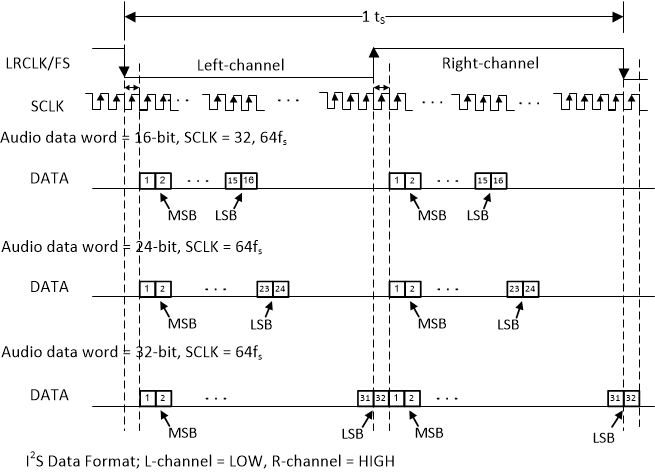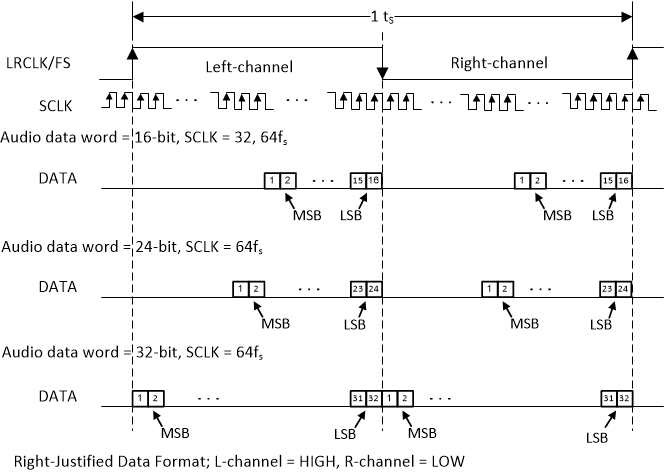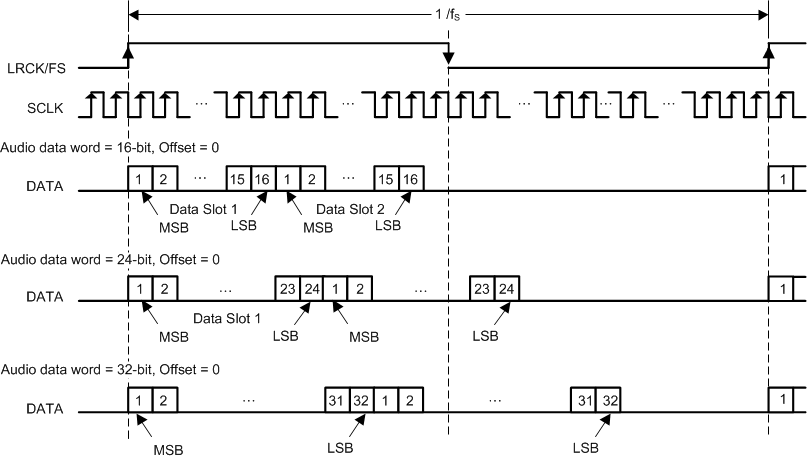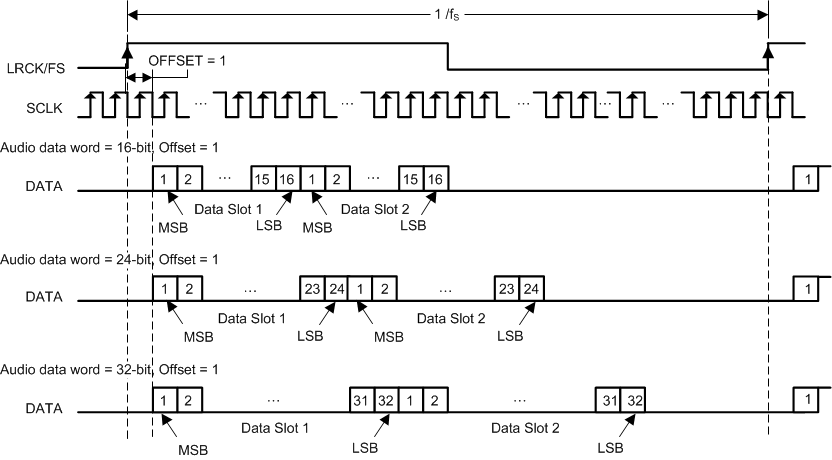SLASF99 December 2023 TAS5827
PRODUCTION DATA
- 1
- 1 Features
- 2 Applications
- 3 Description
- 4 Pin Configuration and Functions
- 5 Specifications
-
6 Detailed Description
- 6.1 Overview
- 6.2 Functional Block Diagram
- 6.3 Feature Description
- 6.4
Device Functional Modes
- 6.4.1 Software Control
- 6.4.2 Speaker Amplifier Operating Modes
- 6.4.3 Low EMI Modes
- 6.4.4 Thermal Foldback
- 6.4.5 Device State Control
- 6.4.6 Device Modulation
- 6.4.7 Programming and Control
- 6.5 Register Maps
- 7 Application and Implementation
- 8 Power Supply Recommendations
- 9 Device and Documentation Support
- 10Revision History
- 11Mechanical, Packaging, and Orderable Information
Package Options
Mechanical Data (Package|Pins)
- RHB|32
Thermal pad, mechanical data (Package|Pins)
- RHB|32
Orderable Information
6.3.6 Serial Audio Port - Data Formats and Bit Depths
The device supports industry-standard audio data formats, including standard I2S, left-justified, right-justified and TDM/DSP data. Data formats are selected via Register ( SAP_CTRL1 Register (Offset = 33h) [Reset = 02h] -D[5:4]). If the high width of LRCLK/FS in TDM/DSP mode is less than 8 cycles of SCK, the register ( SAP_CTRL1 Register (Offset = 33h) [Reset = 02h] -D[3:2]) should set to 01. All formats require binary two's complement, MSB-first audio data; up to 32-bit audio data is accepted. All the data formats, word length and clock rate supported by this device are shown in Table 1. The data formats are detailed in Figure 6-3 through Figure 6-7. The word length are selected via Register (SAP_CTRL1 Register (Offset = 33h) [Reset = 02h] -D[1:0]). The offsets of data are selected via Register (SAP_CTRL1 Register (Offset = 33h) [Reset = 02h] -D[7]) and Register ( SAP_CTRL2 Register (Offset = 34h) [Reset = 00h] -D[7:0]). Default setting is I2S and 24 bit word length.
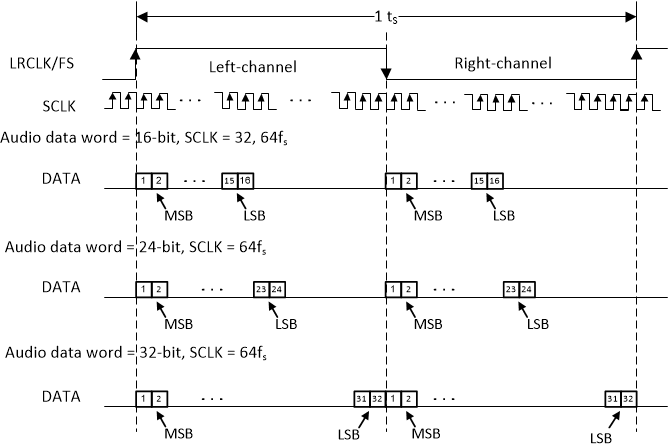 Figure 6-3 Left
Justified Audio Data Format
Figure 6-3 Left
Justified Audio Data Format